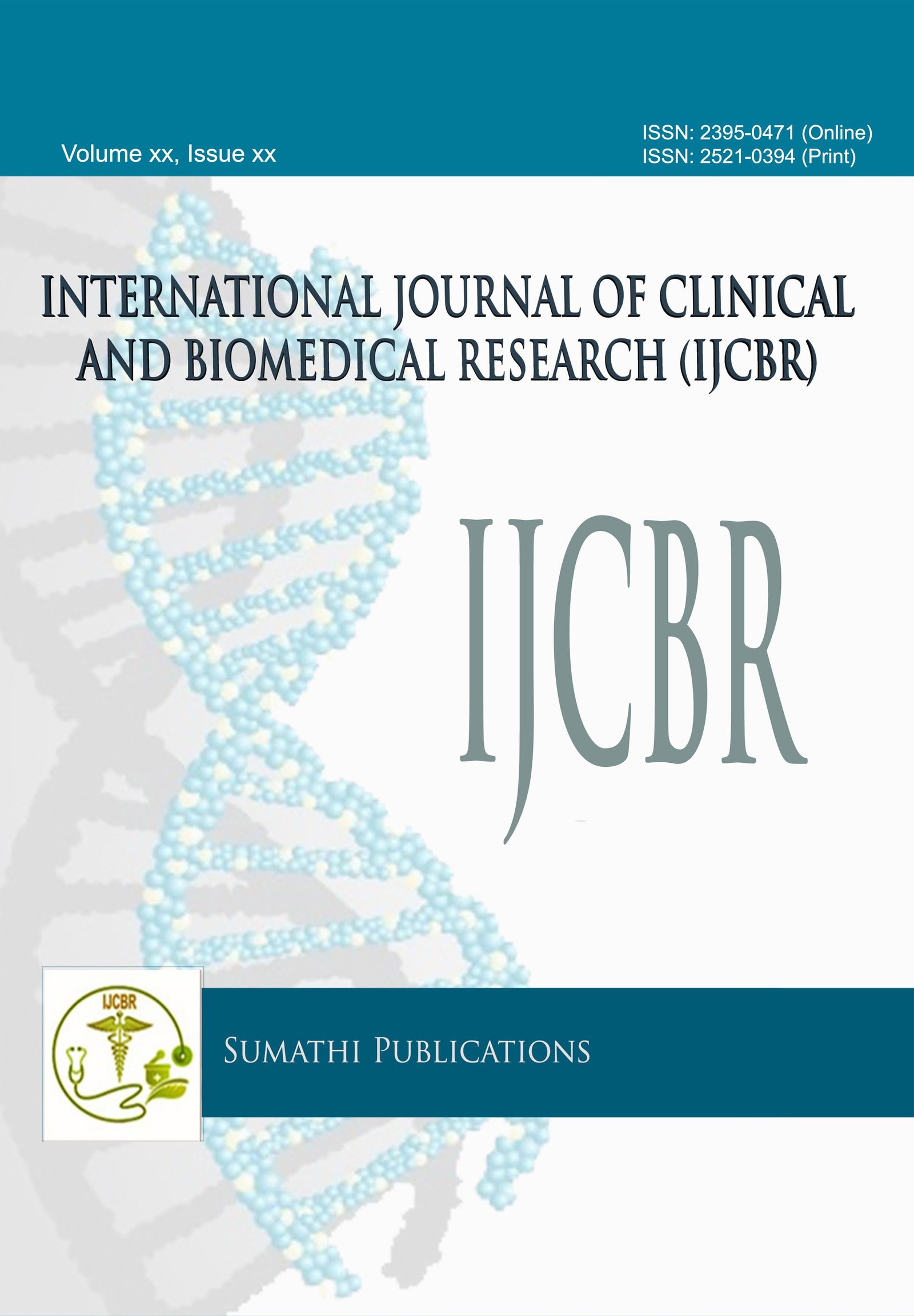CONCORDANCE BETWEEN FREE T4 AND T4 IN THYROID FUNCTION TESTS
Abstract
Background: Thyroid hormones regulate the metabolism of virtually all cells in the body. The frequency of thyroid dysfunction in our population compels every physician to be skilled in the diagnosis of thyroid disease. Direct measurement of serum concentration of TSH, T4 and T3 is used to establish the diagnosis of primary hypothyroidism and hyperthyroidism. The free unbound fraction of T4 (FT4) and T3 (FT3) which is less than 0.03% is the active form of the hormone. Free T4 (the biologically active T4) is less sensitive to changes in serum binding proteins and hence FT4 levels could best represent the thyroid functional status Aim: To evaluate the concordance between total T4, T3 levels and free T4 levels in patients with abnormal thyroid function test reports where the full panel of TFT has been ordered. Materials & Methods: Consecutive TFT reports of patients in whom the full panel of TFT have been ordered over a two month period were included in the analysis. The results obtained were statistically analyzed by the help of Microsoft Excel and SPSS software. Results: In the hypothyroid group, the median TSH was 6.89 microIU/ml (Mean=21.25) with a mean T4 of 6.75 microgm/dl and mean FT4 of 1.03 ng/ml .In this group, the mean T3 was 0.91 ng/ml a range 0.195-1.95. In the hyperthyroid group, the mean TSH was 0.049 microIU/ml with a mean T4 and FT4 of 11.01 microgm/dl and 2.07 ng/ml and the mean T3 was 1.3 ng/ml with a range of 0.62 to 4.33. Statistical analysis using Karl Pearson's method showed a significant correlation (r = 0.8) between T4 and FT4 values. It was also found that T3 also had a significant positive correlation with FT4 and T4. No significant influence of age and gender on TFT was found. 14% of the T4 values in the hypothyroid group and 40 % of T4 values in the hyperthyroid group were in the normal range while Free T4 alone showed changes consistent with the corresponding thyroid dysfunction. Conclusion: FT4 correlates highly with T4 in both primary hypothyroidism and hyperthyroidism, and in conjugation with TSH its measurement serves as a better tool than total T4 in the diagnosis of thyroid disorders.
KEYWORDS: Thyroid function test correlation; Free T4 concordance.
Downloads
Downloads
Published
Issue
Section
License
The journal allows the author(s) to hold the copyright without restrictions and will retain publishing rights without restrictions.
The submitted papers are assumed to contain no proprietary material unprotected by patent or patent application; responsibility for technical content and for protection of proprietary material rests solely with the author(s) and their organizations and is not the responsibility of the journal. The main (first/corresponding) author is responsible for ensuring that the article has been seen and approved by all the other authors. It is the responsibility of the author to obtain all necessary copyright release permissions for the use of any copyrighted materials in the manuscript prior to the submission.
What are my rights as an author?
It is important to check the policy for the journal to which you are submitting or publishing to establish your rights as
Author. Journal's standard policies allow the following re-use rights:
- The journal allows the author(s) to hold the copyright without restrictions.
- The journal allows the author(s) to obtain publishing rights without restrictions.
- You may do whatever you wish with the version of the article you submitted to the journal.
- Once the article has been accepted for publication, you may post the accepted version of the article on your own personal website, your department's website or the repository of your institution without any restrictions.
- You may not post the accepted version of the article in any repository other than those listed above (i.e. you may not deposit in the repository of another institution or a subject-matter repository) until 12 months after publication of the article in the journal.
- You may use the published article for your own teaching needs or to supply on an individual basis to research colleagues, provided that such supply is not for commercial purposes.





